August 13, 2024–Kristiansand, Norway
- mlchad147
- Aug 13, 2024
- 3 min read

With the Baltic behind us, today we began our journey along Norway’s North Sea coast with a visit to Kristiansand, on the country’s southern tip. Kristiansand is Norway’s fourth largest city, with a population of 116,000, and I was pretty sure I was going to like the place when I did some quick research on its economy. In addition to tourism, beer, soft drinks, ice cream, and potato chips were listed as major industries. Why didn’t I know about this?
We scheduled a short, three hour tour, perfect after yesterday’s marathon in Oslo, where I ended up logging 17,000 steps on my pedometer. And oddly enough, neither of the destinations on that tour were located in the city. No complaints though, because I enjoyed both stops.
The first was Høllen, a fishing village tucked into a small inlet less than half an hour south of Kristiansand. As we’ve seen in other small towns in Scandinavia, the houses were neat and tidy, and the owners clearly take their yards and gardens seriously.
Most of the older houses were painted white despite the fact that white paint was more expensive back when they were built. That seems counterintuitive, but using more expensive paint was an indication that the family was well enough off to afford it, something that we might today refer to as keeping up with the Joneses. Today the owners continue the tradition, in part as an enticement to tourists like us to come and spend some money.
We didn’t spend any money, but we did enjoy our visit. The small harbor is picturesque and there’s even a nearby beach, though I can’t imagine anyone swimming in the North Sea even in August, because the water was frigid.
Our second stop took us in the opposite direction, back through Kristiansand and to the northern suburbs, where we took a walking tour through the Kristiansand Museum. The museum is an open air affair showcasing old houses and outbuildings dismantled deep in the Norwegian interior and reassembled here for people to see and enjoy. The US equivalent would be to find original pioneer homes deep in the mountains and collect them in a single location.
A very knowledgeable museum guide brought it to life for us as she walked us around the grounds, and then we were given some free time to poke around inside some of the buildings. I thought it was pretty interesting, especially the grass and weeds growing on the old roofs. The planks used to build the roofs were sealed and held in place with mud and clay, which in turn facilitated plant growth that held the mud and clay in place. Not a bad way to prevent a leaky roof.
And that brought an end to our day’s excursion, just the easy day I was looking for. Tonight we head north along Norway’s North Sea coastline, and the morning will find us in Haugesund, where we plan to get out into the great outdoors. I’ll be back with a full report, hopefully with some great photos. See you then.

All the old houses in Høllen were painted white, even though white paint was more expensive.
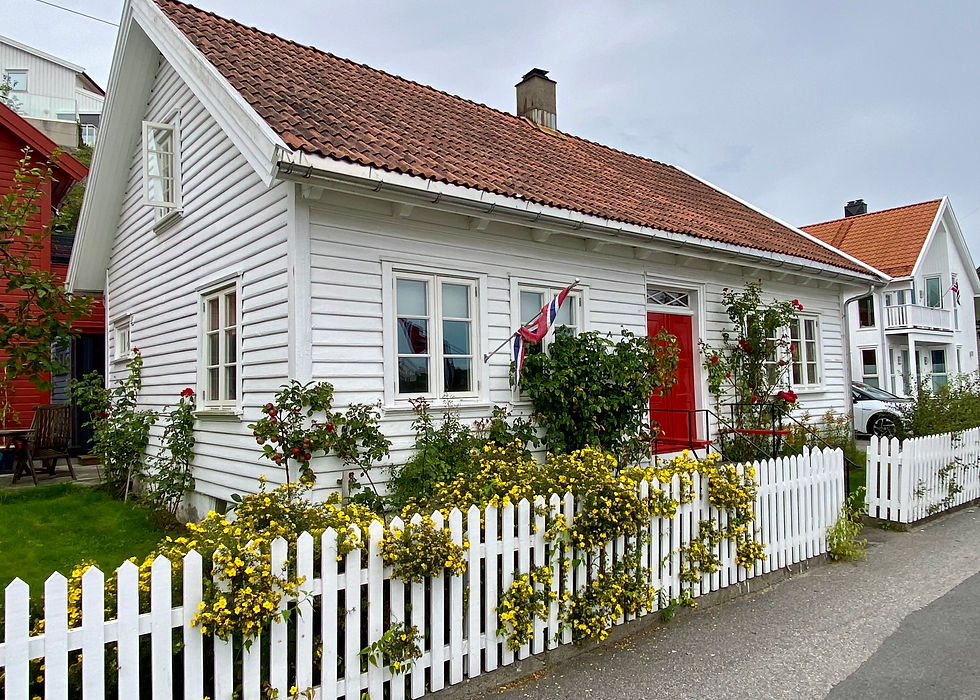
None of the houses had big yards, at least by US standards, but they were very well kept.
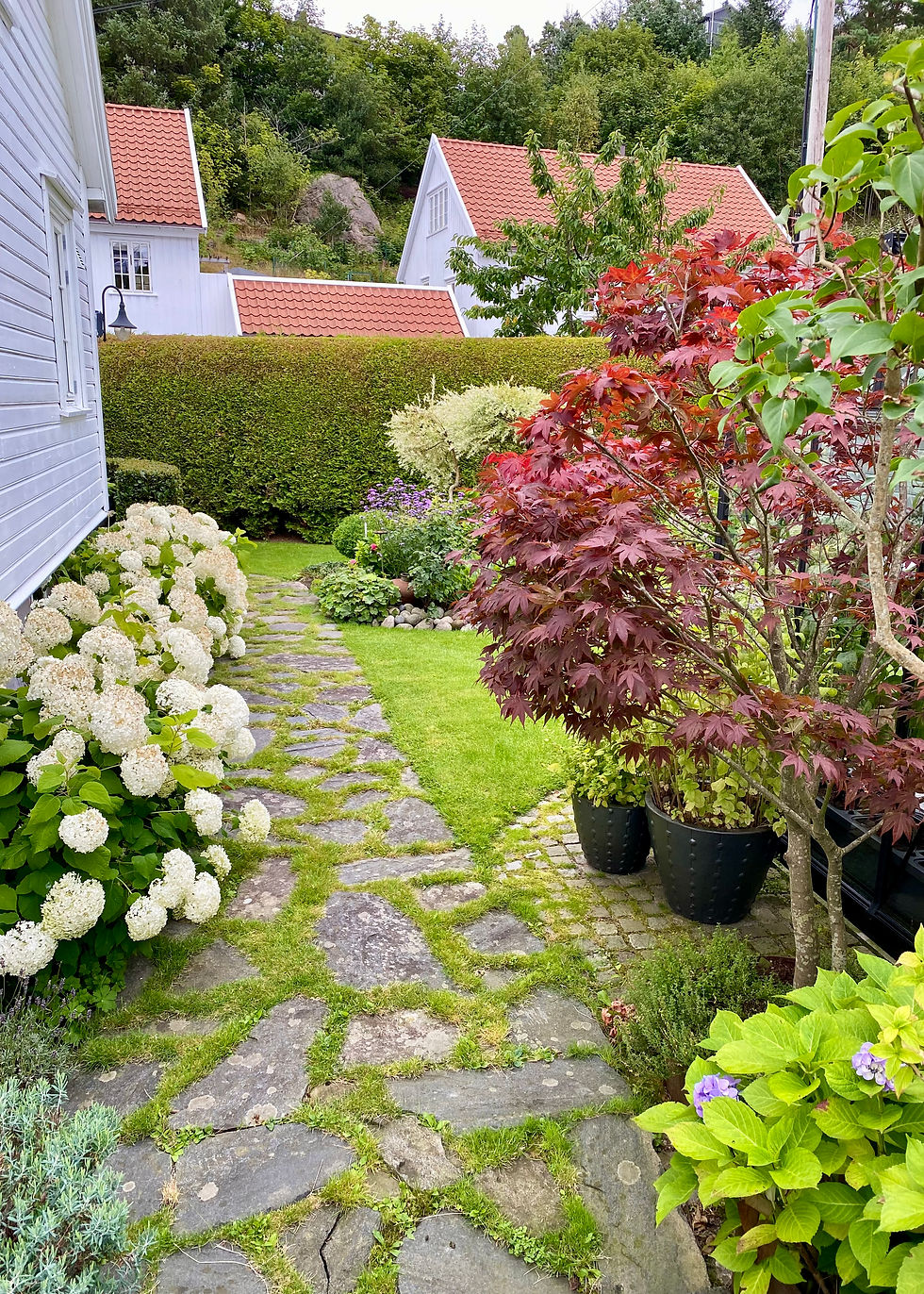
See what I mean?

Some gardens had a whimsical touch.

Other homeowners displayed their sense of humor.

Do you know what this is? There are mirrors on the inside of that little thing, allowing the homeowner to see what’s going on up and down the street from the comfort of his or her easy chair.
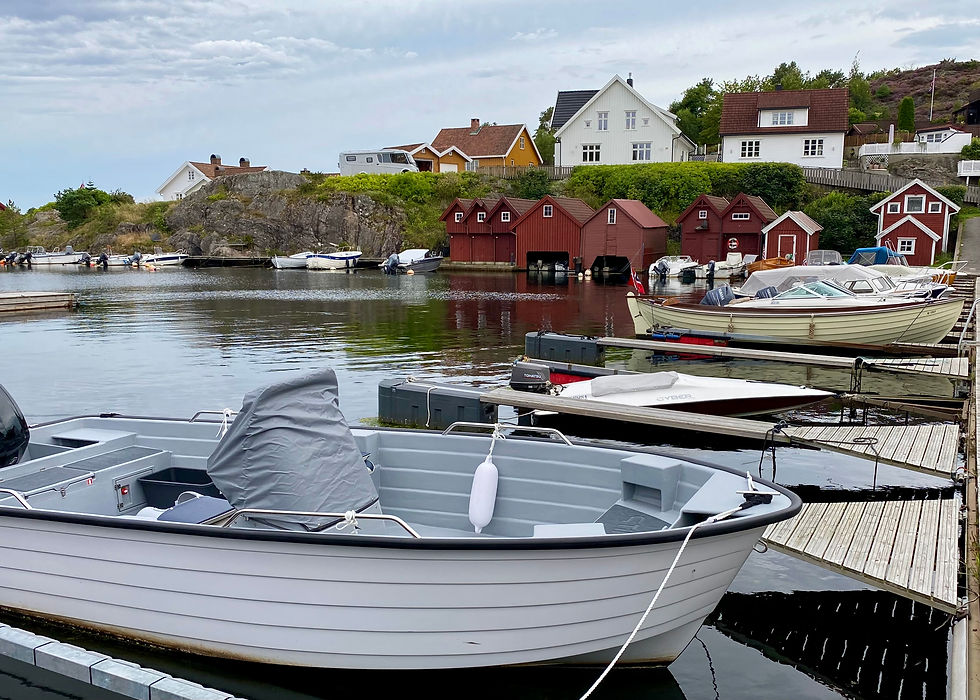
We were told that everyone in coastal Norway has a boat.
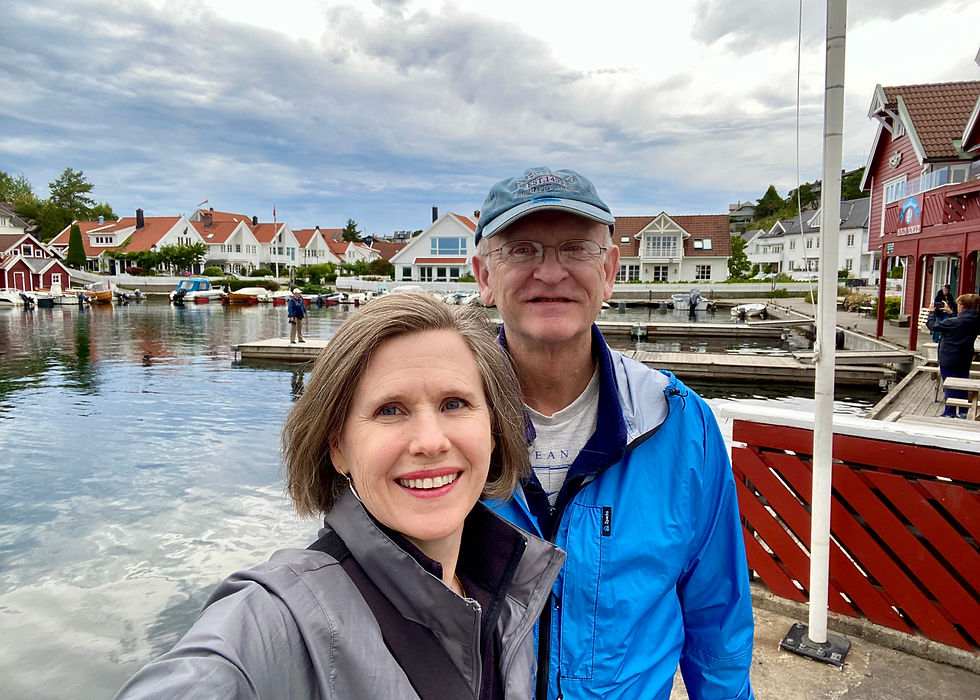
The little harbor was very pretty.
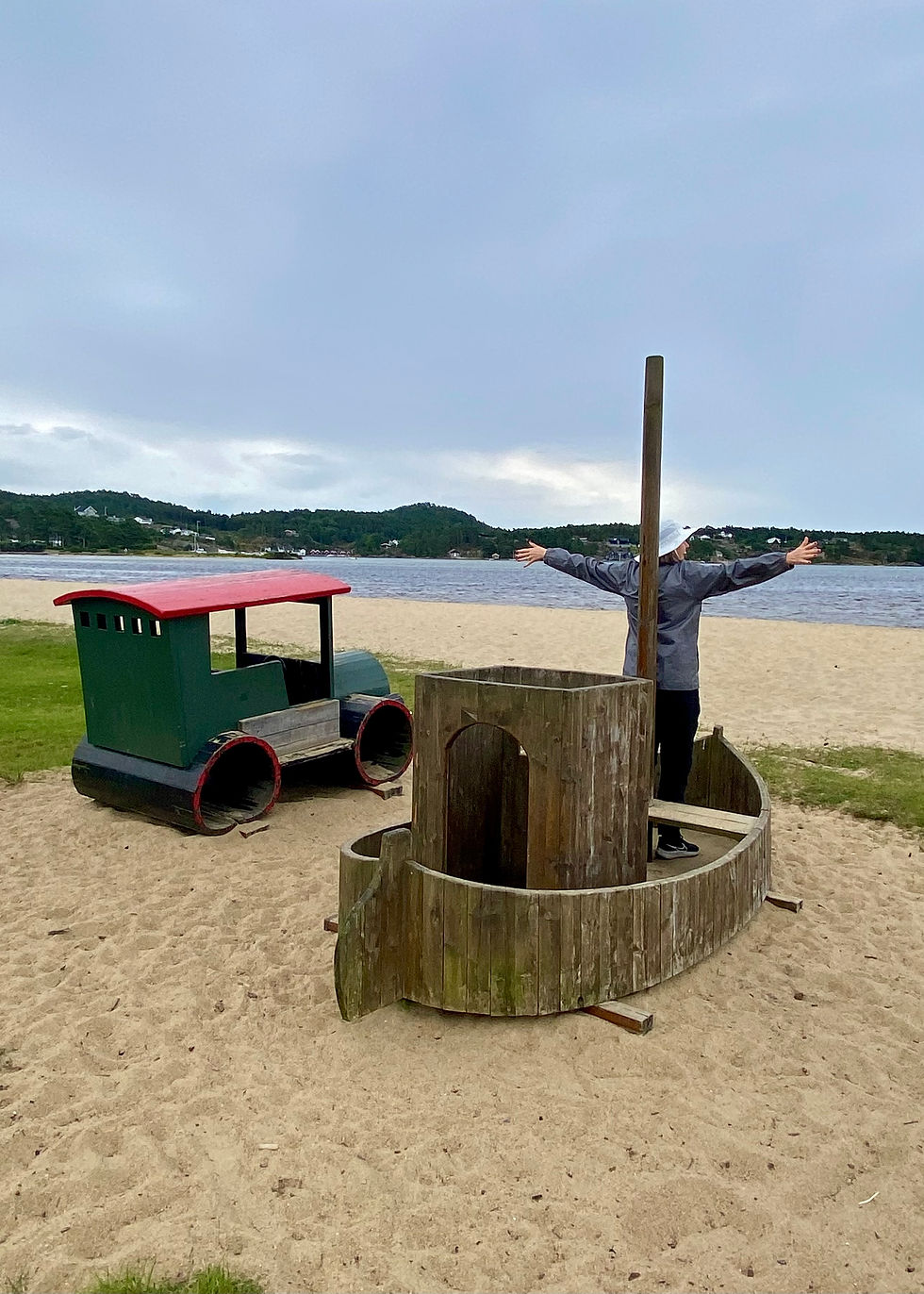
There’s even a beach. Do I dare tell Michele this has been done?
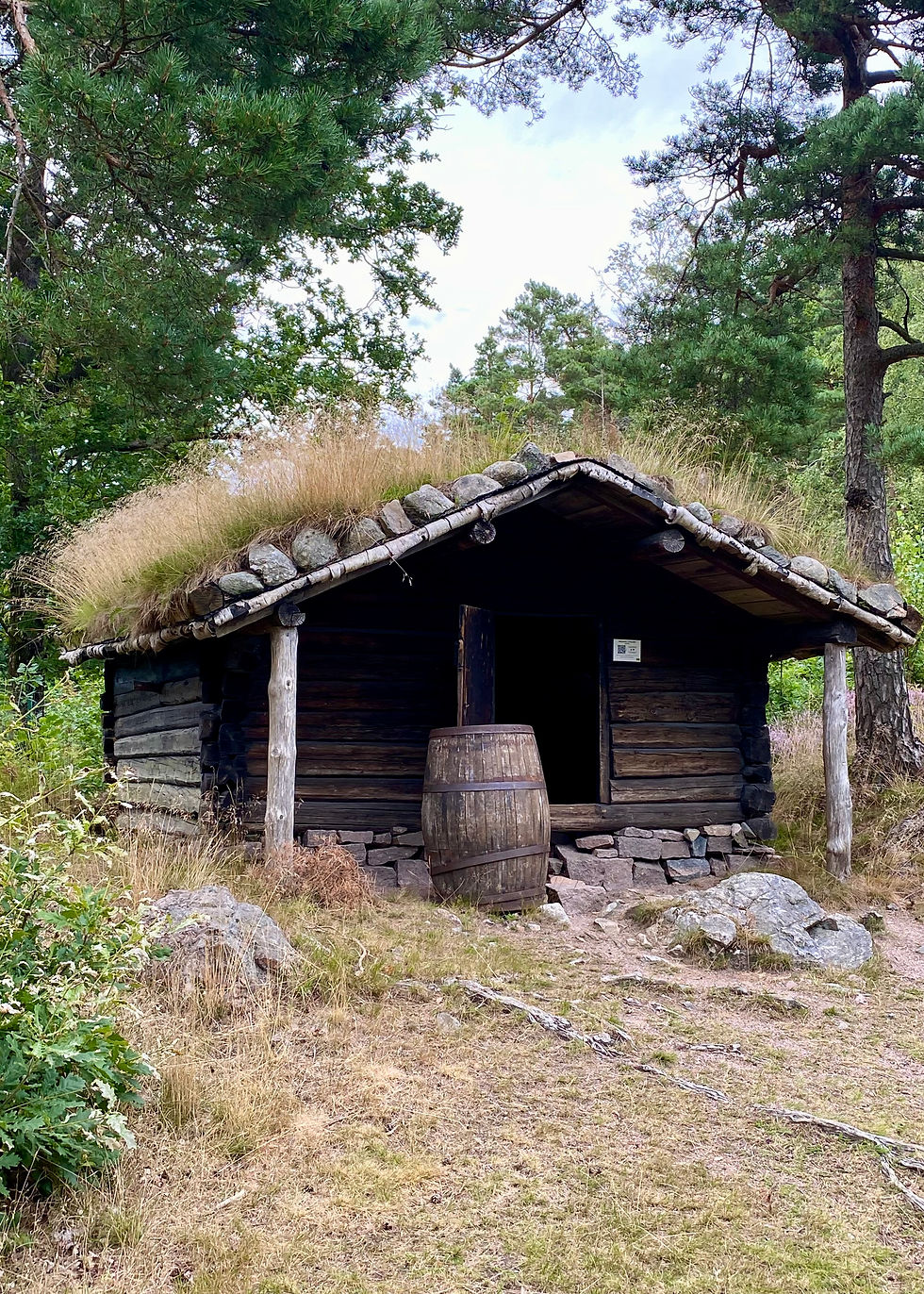
On to the Kristiansand Museum, which has some amazing old Norwegian homes and outbuildings, the oldest dating back to 1580.
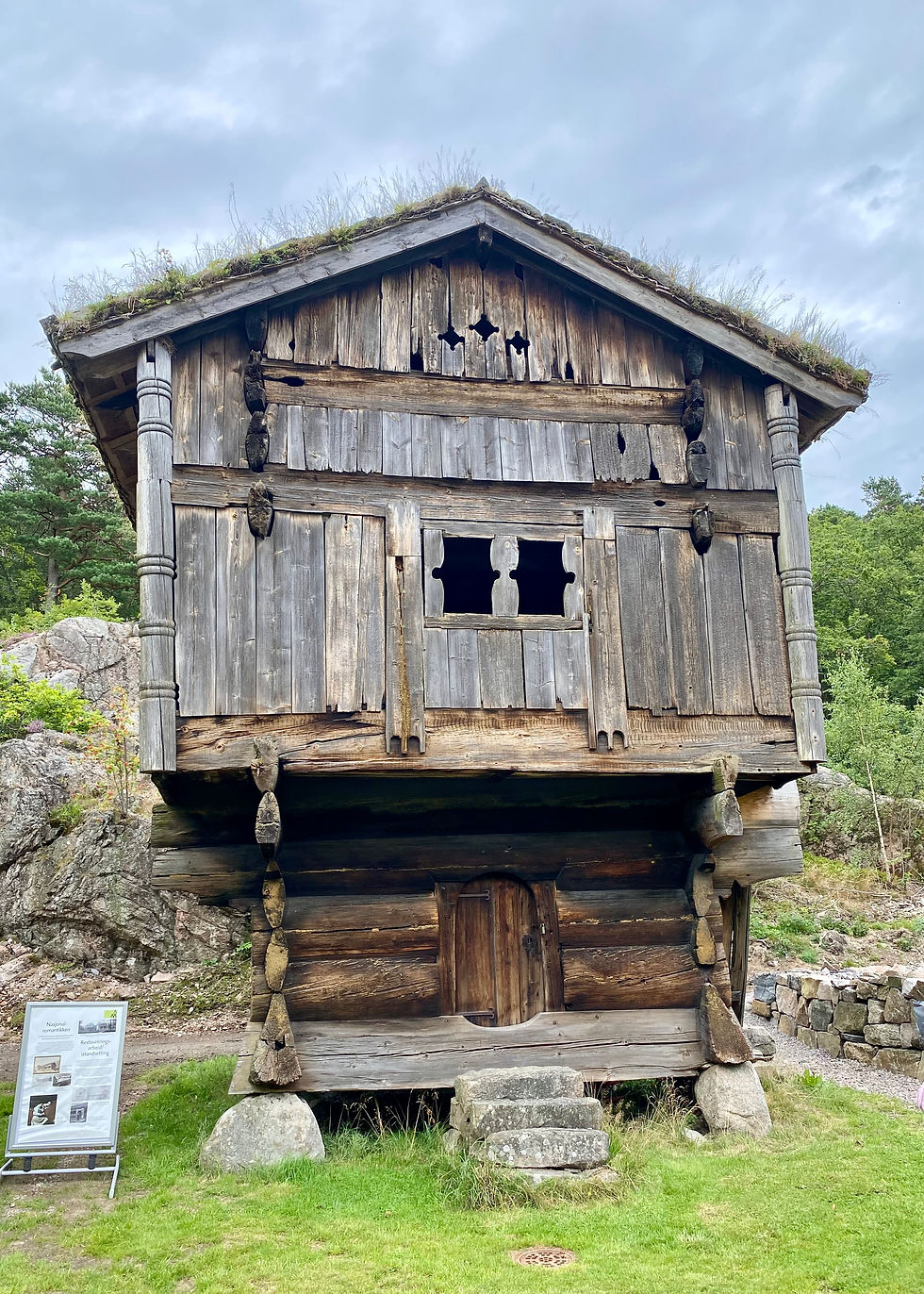
This was a storehouse for food, constructed this way to keep it harder for mice to get in.
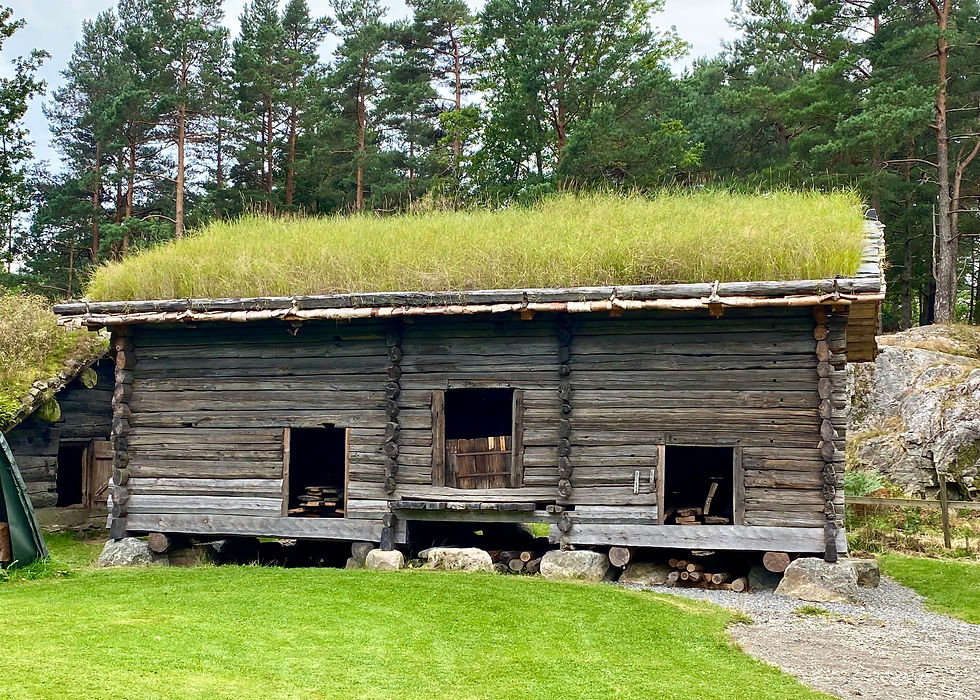
This was a building where animals were kept.
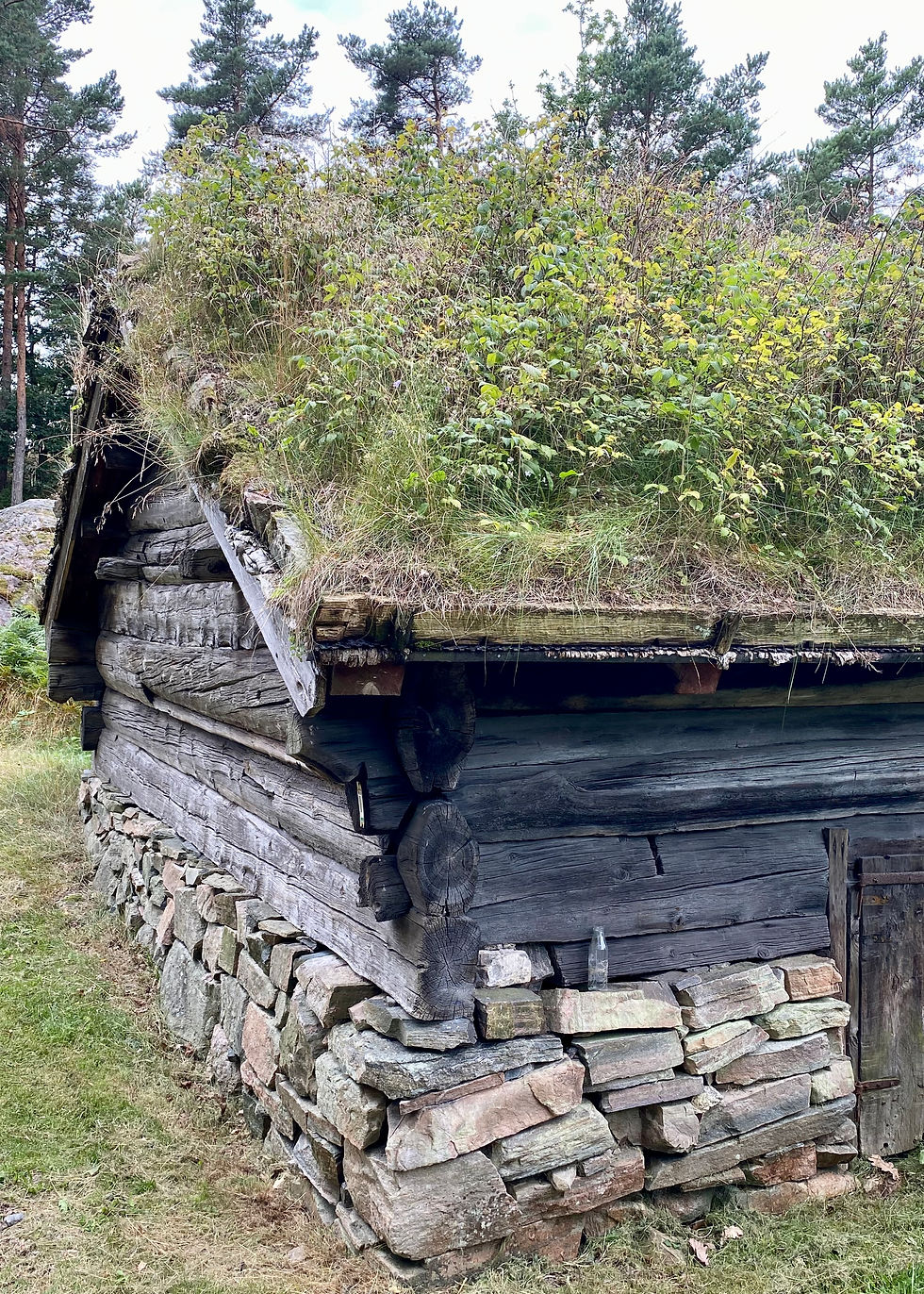
The grass and weeds on the roofs was my favorite part.
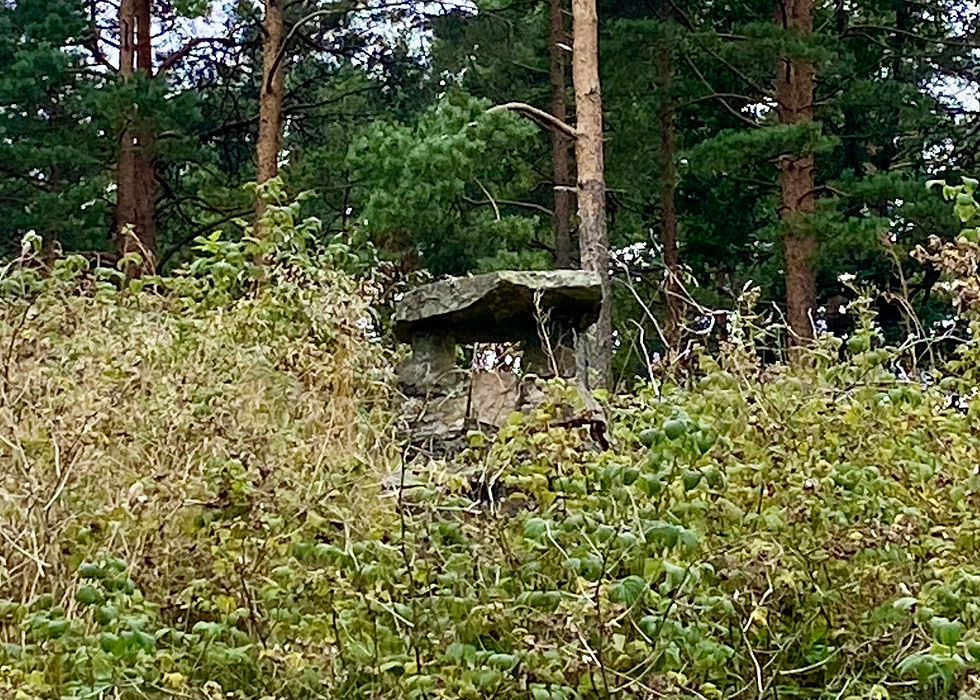
That’s a chimney sticking up through the roof. Before they discovered chimneys they just cut holes in the roof to let the smoke out.
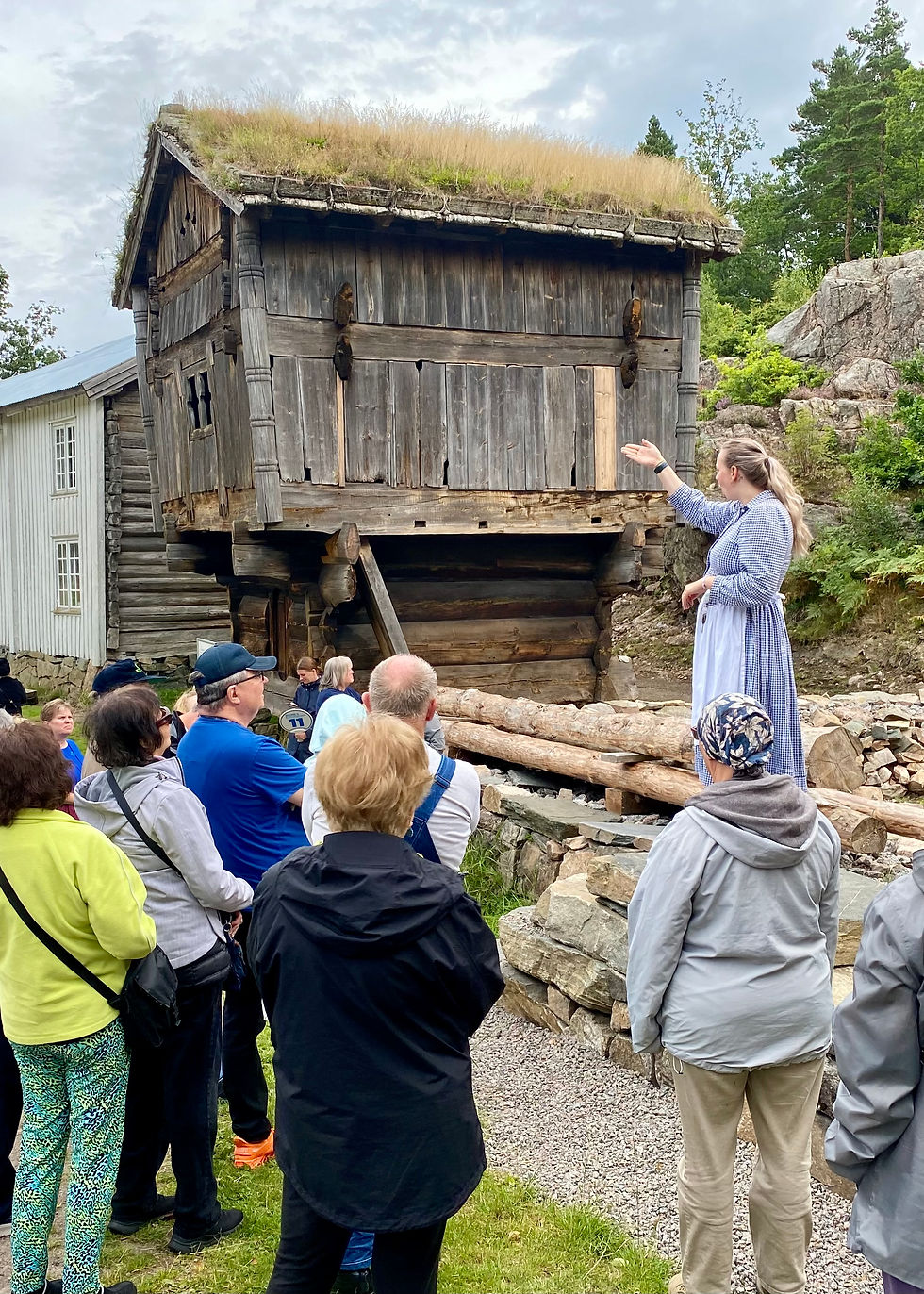
Our very knowledgeable guide gave us a detailed explanation of what we were seeing.

They keep a couple sheep on the premises, and they were noisy.
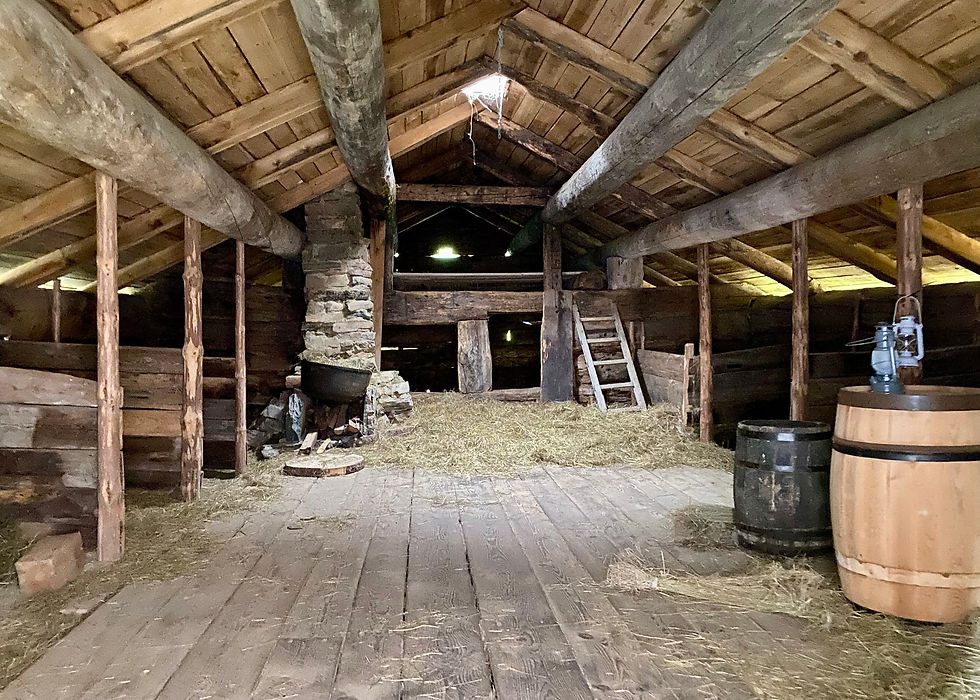
There were “newer” buildings at the museum too. This was a stable, and children slept here with the animals, primarily because there was no room in the house. They slept on the straw, and the animals helped them stay warm.

A “modern” fireplace, after they learned about chimneys.
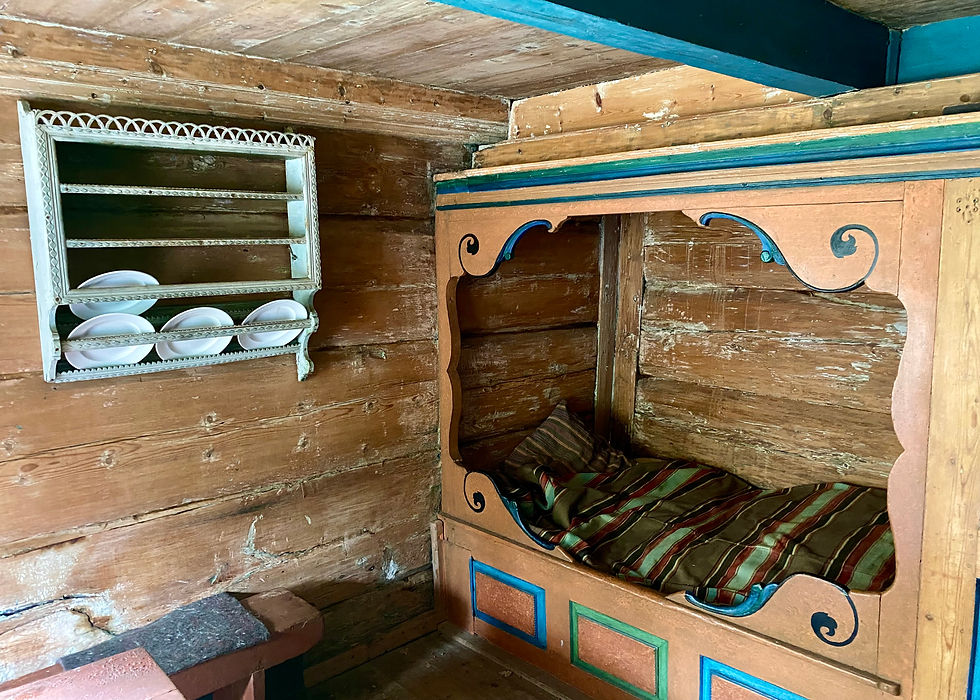
Sleeping quarters.

It’s the library. They say your book is 500 years overdue.

We ran into a moose back at the ship.


